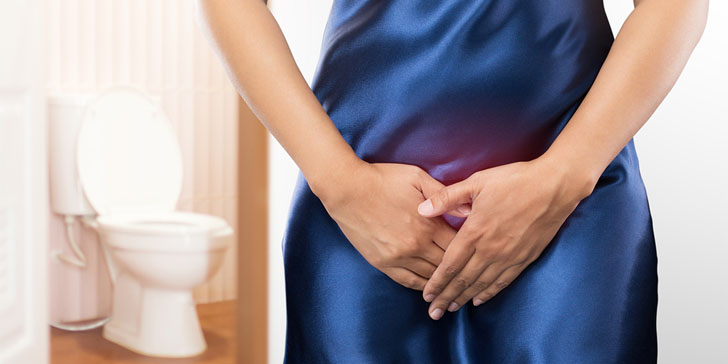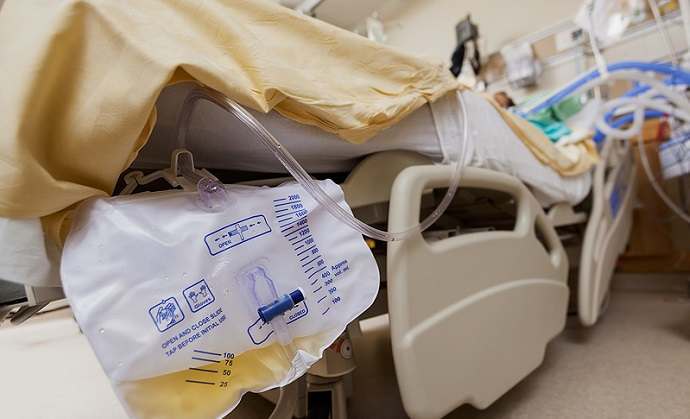
Urinary tract infection (UTI) is an infection in any part of the urinary system; kidneys, ureters, bladder and urethra. Often, UTI occurs because bacteria enter the urethra and travel up to the bladder to multiply. Typically, bladder infections are cause by Escherichia coli (E. coli) bacteria. Urethral infections can also be caused by E. coli, or via sexually transmitted infections (e.g: herpes, chlamydia)
Risk factors
- Did you know? Women are at greater risk of developing UTI than men due to a shorter urethra and closer to the anus.
- Sexual activity
- Blockage of the urinary tract from a kidney stone or an enlarge prostate
- Compromised immune system such as HIV/AIDS
- People on urinary catheter

- People that hold their urine for long periods
Signs and symptoms
- Strong urge to urinate often (urgency)
- Pain or burning sensation when peeing (dysuria)
- Inability to hold urine (urinary incontinence)
- Increased frequency in urinating
- Cloudy or bloody urine
- Strong smelling urine
- Pain lower abdomen or back (pelvic pain for women, rectal pain for men)
- Fever
- Chills
- Nausea, vomiting
Types of UTI
| Part of urinary tract affected | Signs and symptoms |
| Kidneys (acute pyelonephritis) |
|
| Bladder (cystitis) |
|
| Urethra (urethritis) |
|
Treatment
Antibiotics are usually the first line treatment. Often, the symptoms will resolve within few days of treatment. Longer courses of antibiotics or stronger doses may be required for those with recurrent infections. Ensure to finish the entire course of antibiotics as prescribed.
Complications
If UTI is left untreated, it may have serious consequences such as:
- Recurrent UTIs occurring at least twice in six months or four times in a year (most common in women)
- Permanent kidney damage due to acute or chronic kidney infection
- Urinary narrowing (stricture) in men due to recurrent infections
- For pregnant women, there is increased risk of delivering low birth weight or premature babies
- Urosepsis
Prevention
- Hydrate yourself with adequate water. Drinking water helps to dilute the urine. Also, it ensures one to urinate more frequently which allows the bacteria to be flushed from the urinary tract out of the body.
- Drink cranberry juice. A recent study reports within 8 hours of drinking cranberry juice could help prevent bacteria from causing an infection in the urinary tract. It was found that cranberry metabolites in the juice can reach the urinary tract and prevent E. coli bacteria adhesion to other bacteria, thus limiting its ability to grow and multiply.

- Proper wiping after urinating/bowel movement. Wipe from front to back to prevent bacteria in the anal region from spreading to the vagina and urethra.
- Use condoms can prevent bacterial transmission during vaginal intercourse. Avoid unlubricated condoms as it they may stress the vaginal tissues, and spermicidal lubricants which may trigger vaginal inflammation
- Empty the bladder immediately after an intercourse. Doing so helps to flush the bacteria and other microbes out of the urinary tract.
- Avoid potentially irritating feminine products. Using douches or powders in the genital area may irritate the urethra and strips away the vaginal flora, thus creating an ideal environment for bacterial infection.
- Avoid holding your urine. This will allow any bacteria circulating in the bladder to establish an infection.
References:
- Urinary Tract Infection: Causes, Symptoms & Treatment | Live Science
- Urinary Tract Infections | Verywell Health
- Urinary tract infection (UTI) | Mayo Clinic
- Tao Y, Pinzón-Arango PA, Howell AB, Camesano TA. Oral consumption of cranberry juice cocktail inhibits molecular-scale adhesion of clinical uropathogenic Escherichia coli. J Med Food. 2011;14(7-8):739–45.
Image credit:
- https://2rdnmg1qbg403gumla1v9i2h-wpengine.netdna-ssl.com/wp-content/uploads/sites/3/2019/04/urinaryTractInfectns2-1058161690-770x553-650x428.jpg
- https://perlmanclinic.com/wp-content/uploads/2018/10/urinary-tract-infection-treatment.jpg
- https://www.organicfacts.net/wp-content/uploads/cranberryjuice.jpg
- https://utireport.org/wp-content/uploads/2015/11/dt_140523_urinary_catheter_800x600.jpg








